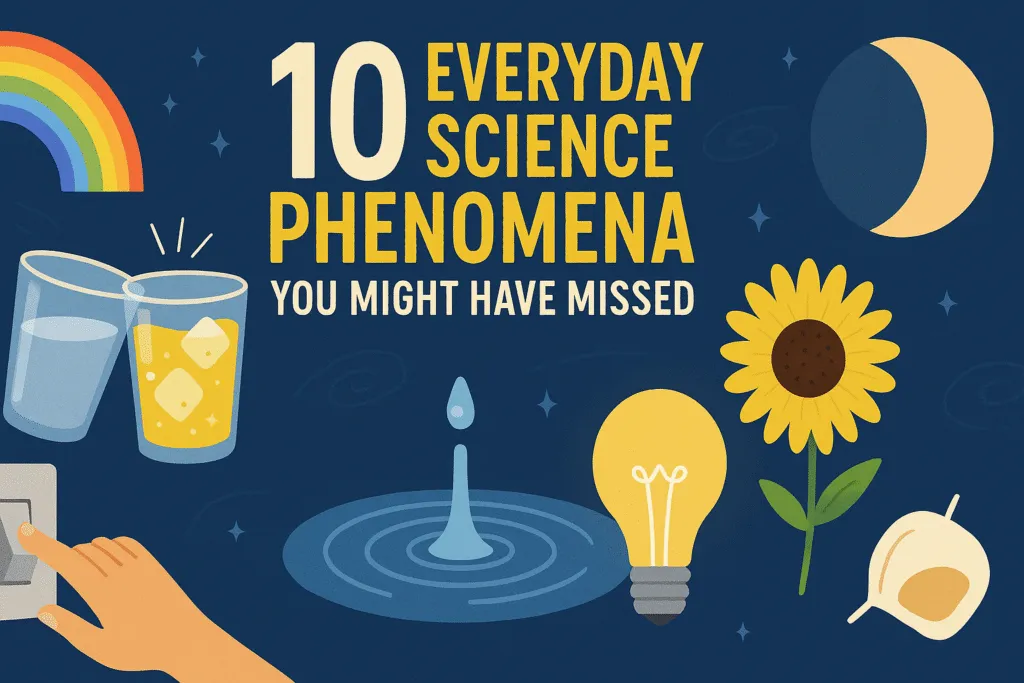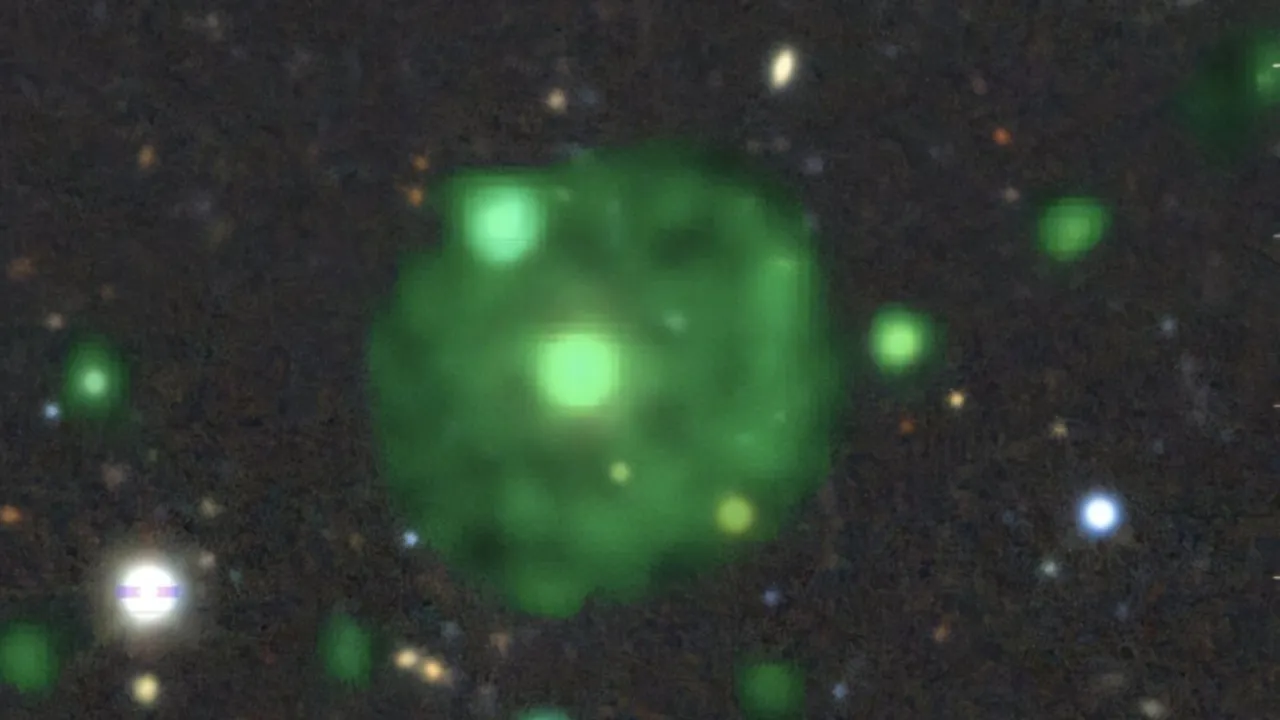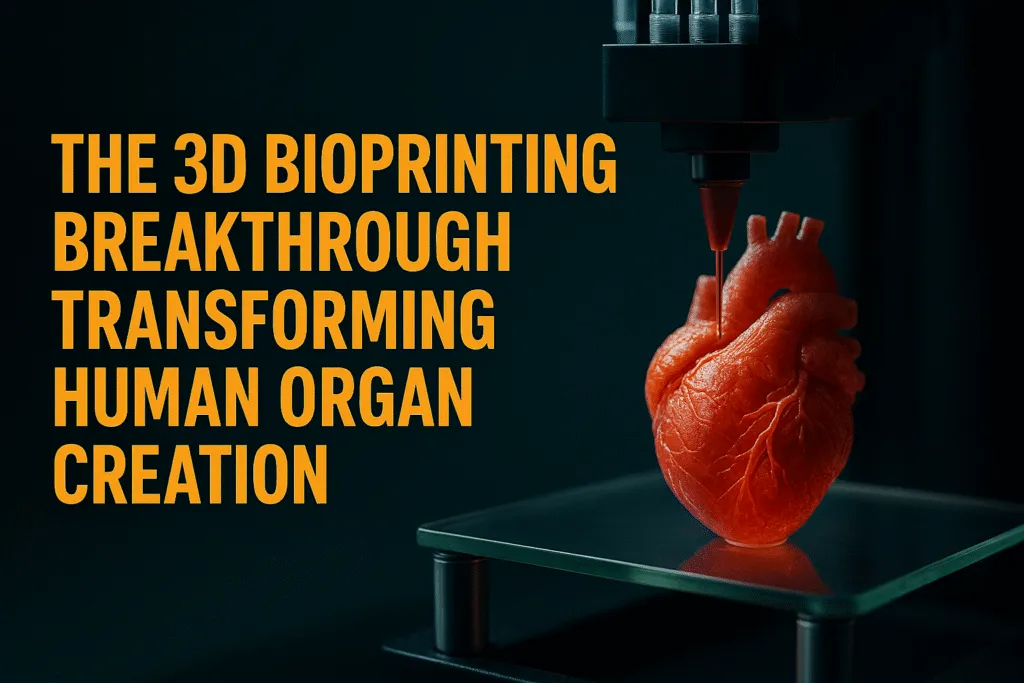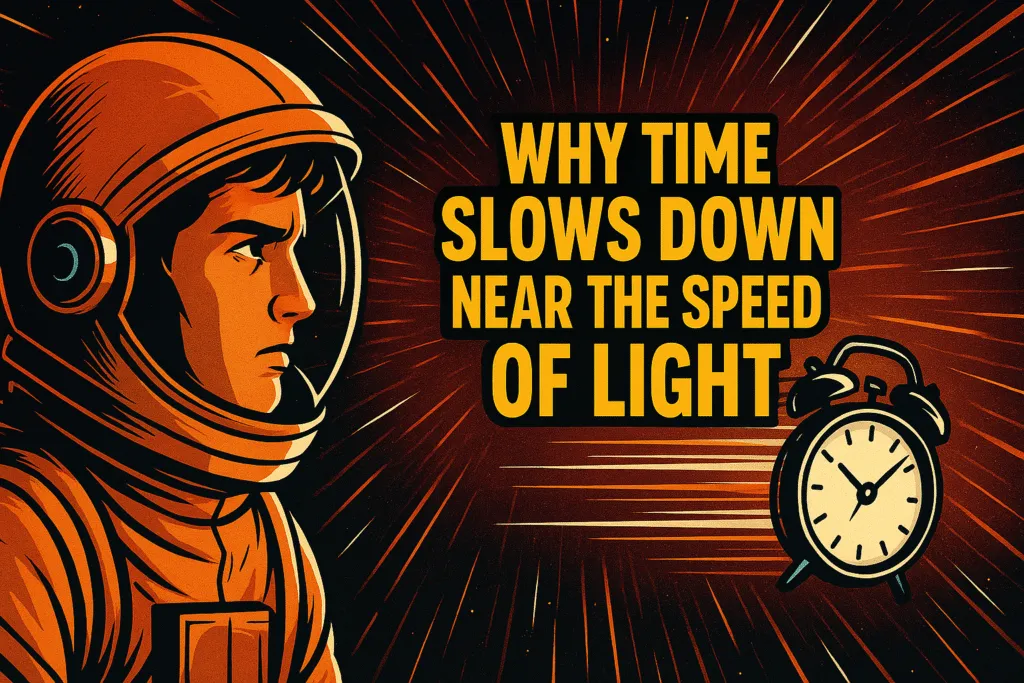Introduction
Have you ever stopped for a moment during your daily routine and wondered how much unnoticed science is happening around you? From your morning cup of tea to the fogged-up bathroom mirror, we are constantly surrounded by amazing Science Phenomena—many of which we take for granted. As a tech blogger, I’m used to diving into the world of innovation and discovery, but sometimes, the most fascinating science is hiding in plain sight.
What makes everyday Science Phenomena so interesting is their ability to surprise us once we look a little closer. These are not complicated lab experiments or space-age inventions; they’re simple things we all experience, often without realizing the science behind them. Think about the tiny droplets that form on grass in the early morning or the strange rainbow colors that appear on an oily surface. Each of these moments has a scientific story to tell.
This blog is your invitation to pause and explore the incredible Science Phenomena happening in your everyday life. Whether you’re a student, a curious mind, or just someone who enjoys discovering how the world works, these small insights can change the way you see things. It’s not just about facts and formulas—it’s about connecting what you observe with the science that explains it.
So, before we jump into high-end gadgets or complex theories, let’s rewind and appreciate the science that quietly shapes our daily world. These overlooked events are not only fascinating but also deeply educational, reminding us that science isn’t confined to labs or textbooks—it’s alive in every drop, shadow, and sparkle we see.
Stay with me as we uncover the top 10 everyday Science Phenomena you’ve probably never noticed.
Boiling Water and Bubble Formation
Boiling water might seem like the most ordinary thing you do in the kitchen, but it’s actually one of the most visually interesting Science Phenomena you witness daily. Every time you heat water, you’re observing the complex interaction between heat, molecules, and pressure in real time.
As the water temperature rises, the molecules begin to move faster and collide more frequently. When it reaches its boiling point—100°C at sea level—the energy is high enough to turn liquid water into vapor. But the fascinating part is how those bubbles form. Initially, tiny air bubbles appear at the bottom of the vessel. These are not water vapor yet, but trapped air escaping as the water heats up.
Soon after, real steam bubbles begin forming at specific points called nucleation sites—often tiny imperfections on the pot’s surface. These bubbles grow rapidly and rise to the surface, releasing water vapor into the air. What you’re seeing is a rapid phase transition from liquid to gas, something we rarely think twice about.
This everyday event also reflects how pressure affects boiling. At higher altitudes, where air pressure is lower, water boils at a lower temperature, changing the way food is cooked. It’s a simple action—boiling water—but it teaches us volumes about heat transfer, energy, and fluid dynamics.
Next time you make tea or boil pasta, take a second to observe the bubbles. You’re not just cooking; you’re witnessing a classic Science Phenomenon unfold right in your kitchen. It’s these small, overlooked moments that show how science is not limited to labs—it’s quietly working around us all the time.
Morning Dew on Grass
Waking up to a lawn covered in tiny droplets is a common sight, yet most of us rarely stop to wonder how it happens. That light layer of moisture—known as morning dew—is one of the most elegant Science Phenomena that quietly takes place while we sleep.
Dew forms through a process called condensation. As the night progresses, the temperature of surfaces like grass, leaves, and soil drops. If the air is humid enough, the water vapor in the atmosphere begins to cool and condense into liquid form on these cooler surfaces. This happens especially when the surface temperature falls below the dew point—the temperature at which air becomes saturated and can no longer hold all its moisture.
Unlike rain, dew doesn’t fall from the sky. It forms directly on objects. And the reason grass tends to get dewier than roads or rocks? Because grass cools down faster due to its thin structure and large surface area, making it an ideal host for condensation.
This simple occurrence reflects several layers of environmental science. It tells us about humidity, temperature variations, and even microclimates within a garden or field. In fact, farmers and gardeners often observe dew patterns as natural indicators of upcoming weather conditions.
So the next time you walk across a wet lawn in the early morning, remember—it’s not just nature being pretty. It’s one of those subtle Science Phenomena that reveals the invisible dance between air, temperature, and moisture. Moments like these remind us that even something as gentle as dew is backed by powerful scientific principles working behind the scenes.
Rainbow in Oil on Water
You’ve probably seen it before—shiny, rainbow-like colors swirling on a puddle after a few drops of oil spill on its surface. It looks beautiful, almost magical. But behind that visual treat lies one of the most mesmerizing Science Phenomena: thin-film interference.
When oil spreads over water, it forms a very thin layer—often just a few nanometers thick. Light hitting this layer doesn’t just reflect off the surface. Some of it also penetrates the oil, reflects off the water below, and comes back up. Now, here’s where the magic of science kicks in. The two light waves—one reflected from the oil and the other from the water—interact with each other. Depending on their path difference and the thickness of the oil film, they can either amplify or cancel each other out. This is what creates the shifting rainbow colors.
What’s even more interesting is that these colors change depending on the angle you view them from or how thick the oil layer is in different spots. Unlike rainbows formed by water droplets, which rely on light refraction and reflection, this is all about interference—how waves mix, overlap, and react to each other.
This everyday Science Phenomenon is a brilliant example of how physics explains the beauty we often overlook. It also finds real-world use in devices like anti-reflective coatings on glasses and camera lenses, where engineers apply the same principles in reverse to cancel out glare.
Next time you see a colorful oil patch on water, don’t just walk past it. You’re looking at a live demonstration of wave physics at work—a small but stunning reminder that science is always present, even in the most unexpected places.
Refrigerator Light Turns Off – or Does It?
It’s a question many of us have asked as kids (and maybe even as adults): does the refrigerator light really turn off when the door is closed? While it might sound like a fun mystery, it’s actually one of those simple yet clever Science Phenomena happening right inside your kitchen.
The answer is yes—the light does turn off. And the way it happens is surprisingly smart. Most modern refrigerators use a tiny switch, usually located along the door frame. When the door is open, the switch pops out and completes an electrical circuit, turning the light on. Close the door, and the switch is pushed in, breaking the circuit and turning the light off.
This small mechanism is a perfect example of how science and engineering come together in everyday appliances. It’s based on basic electrical principles: circuits, switches, and the flow of current. While you can’t see it happen, the change is instant and automatic—just like flipping a light switch, but hidden in the shadows of your fridge.
Curious minds have even tested this Science Phenomenon by placing a camera or phone inside the fridge to catch the moment of darkness. And guess what? The light truly does go out.
What makes this interesting isn’t just the mechanism—it’s how such a tiny, unnoticed feature plays a role in energy efficiency. Leaving the light on would waste electricity and add unnecessary heat, forcing the fridge to work harder.
So the next time you grab a snack, think about the small but precise science working behind that cool glow. It’s these everyday Science Phenomena that quietly keep our lives running smoothly—no lab coat required.
Static Shock After Walking on Carpet
That tiny zap you feel after walking across a carpet and touching a doorknob might seem annoying, but it’s actually one of the most common and surprising Science Phenomena in everyday life—static electricity in action.
Here’s what’s really happening: as you walk across a carpet, your body picks up extra electrons from the surface due to friction. This process is called triboelectric charging. Different materials have different tendencies to gain or lose electrons, and in this case, your shoes and the carpet make the perfect pair for electron transfer. Over a few steps, your body starts to build up a negative charge without you even noticing.
When you finally touch a metal object—like a doorknob or another person—those excess electrons suddenly jump from your body to the conductive surface. That rapid movement of electrons is what creates the sharp, brief shock you feel. It’s a real mini-electric discharge, and while it lasts only a fraction of a second, it’s a powerful reminder of the invisible forces around us.
This Science Phenomenon also becomes more noticeable in dry conditions, like during winter or in air-conditioned rooms. Moist air tends to carry electricity away from your body more easily, reducing the chance of a shock. But dry air allows the static charge to build up to the point where it suddenly discharges.
Though static shock might feel like a harmless prank from the universe, it’s a real-world display of how electricity behaves. It’s also the same principle used in technologies like laser printers and even air purifiers. So the next time you get that tiny jolt, smile—you just experienced a little bit of everyday science in action.
Water Rising in an Upside-Down Glass
Ever tried placing a lit candle in a shallow plate of water and then covering it with a glass? If you’ve done this classic experiment, you’ve likely seen water mysteriously rise inside the glass once the flame goes out. It looks magical, but this is actually one of the most visually striking Science Phenomena explained by air pressure and temperature changes.
Here’s how it works: when the candle is burning inside the glass, it heats the air, causing it to expand. Once the flame goes out—due to limited oxygen—the air inside begins to cool. Cooler air contracts, creating lower pressure inside the glass compared to the surrounding atmosphere. This pressure difference causes the water to rise into the glass to equalize the pressure.
Many people mistakenly believe the water rises because the flame “sucked in” the water by using up oxygen. While it’s true the oxygen is reduced, the real cause is the cooling and contracting air. This Science Phenomenon beautifully demonstrates how gases respond to temperature and how pressure differences can move fluids. This phenomenon happens due to a drop in air pressure inside the glass. If you’re curious to explore how air pressure works, NASA provides a great beginner-friendly explanation.
It’s also a great example of how atmospheric pressure—something we can’t see—constantly influences what happens around us. In fact, the same principle is at work in many devices like barometers and even your car’s engine system.
This everyday demonstration shows that science isn’t always complex. Sometimes, it’s as simple as a candle, a glass, and a little bit of curiosity. So the next time you want to impress someone with science, just light a candle and let air pressure do the rest. Behind this seemingly simple trick is a powerful reminder of the Science Phenomena that shape our world silently, yet dramatically.
Ice Floating on Water
It might seem ordinary to see ice cubes floating in a glass of water, but this simple sight hides one of the most unique and essential Science Phenomena in nature—ice being less dense than liquid water. Ice’s lower density is what keeps it afloat on water, unlike most solids. Britannica offers a clear breakdown of why ice floats on water, with real-world examples.
Most substances become denser as they cool, meaning their solid form sinks in their liquid form. But water is different. When it freezes, its molecules arrange themselves in a structured lattice that takes up more space than when they’re in liquid form. This open structure makes ice less dense than water, allowing it to float.
Why is this Science Phenomenon so important? Because it plays a critical role in maintaining life on Earth. In lakes, rivers, and oceans, ice forms on the surface, insulating the water below and preventing it from freezing solid. This creates a stable environment for aquatic life during harsh winters. If ice sank, bodies of water would freeze from the bottom up, making survival for fish and other creatures nearly impossible.
You can also observe this phenomenon right at home. Drop an ice cube into water, and you’ll see it float—proof that density and molecular structure matter more than we often realize. It’s also why frozen water bottles expand and sometimes burst; ice takes up more space than liquid water.
This everyday event may feel routine, but it’s a perfect reminder of how the smallest details in science can have massive consequences. The next time you add ice to your drink, take a moment to appreciate the quiet brilliance of this Science Phenomenon—proof that sometimes, science not only explains the world but also helps preserve it.
Shadows Changing Size Throughout the Day
You’ve probably noticed your shadow stretching long in the morning, shrinking around noon, and then growing again as the day ends. While it might seem like a simple trick of the light, this daily change is actually one of the most reliable and observable Science Phenomena caused by the Earth’s rotation and the position of the sun in the sky.
As the Earth rotates on its axis, the angle at which sunlight hits the ground constantly changes. In the early morning and late afternoon, the sun is lower on the horizon, so its rays strike at a sharper angle. This makes your shadow appear longer. Around midday, when the sun is nearly overhead, the sunlight hits you more directly, causing your shadow to shorten—sometimes almost disappearing directly beneath you.
This Science Phenomenon isn’t just fascinating to watch; it has played an important role in human history. Ancient civilizations used shadow patterns to create sundials, helping them track time long before mechanical clocks existed. Farmers also observed shadow lengths to understand time and seasons.
It’s a simple yet powerful way to visualize Earth’s motion in real time. You don’t need any tools—just your body and some sunshine. In fact, you can even conduct your own experiments by marking your shadow’s position at different times of the day and watching how it shifts.
So the next time you see your shadow stretching across the ground, remember—it’s not just a fleeting shape. It’s a live demonstration of Earth’s journey through space and one of the most consistent Science Phenomena you can observe every single day.
Spoons Getting Hot in Tea but Cups Stay Cool
Ever noticed how the metal spoon in your hot cup of tea gets warm quickly, while the ceramic cup stays cool to the touch for a while? This simple observation is a brilliant example of thermal conductivity, one of the lesser-known but very real Science Phenomena you encounter almost daily.
Different materials conduct heat at different rates. Metals, like stainless steel or silver, are excellent conductors. That means they allow heat to pass through them very quickly. So, when you place a metal spoon in a hot drink, the heat from the liquid rapidly travels up the spoon, making it feel warm or even hot to your fingers in just a few seconds.
On the other hand, ceramic is a poor conductor of heat—it’s an insulator. That’s why your cup can hold scalding tea without burning your hands. The heat transfer happens slowly, allowing the outer surface of the cup to remain relatively cool, even though the liquid inside is steaming.
This Science Phenomenon isn’t just about comfort; it’s crucial in design and safety. That’s why cookware has metal bodies for efficient heat distribution but plastic or wooden handles to prevent burns. The same principle is applied in homes, electronics, and even spacecraft, where managing heat is critical.
Next time you stir your tea and feel the spoon warming up, remember—you’re experiencing a live lesson in how materials behave. It’s not magic; it’s science working silently in your hands, reminding us that even our smallest actions are full of meaning when we understand the Science Phenomena behind them.
Fog on Bathroom Mirrors
After a hot shower, your bathroom mirror often becomes cloudy, hiding your reflection behind a layer of mist. While it might seem like just an everyday inconvenience, this is actually a classic example of condensation—one of the most common and visible Science Phenomena in your home.
Here’s what really happens: when you take a hot shower, the warm water increases the humidity in the bathroom. This warm, moist air spreads throughout the room and comes into contact with cooler surfaces—like the mirror. Since the mirror stays at a lower temperature than the air, the water vapor in the air begins to cool down when it touches it. As it cools, it loses energy and changes from a gas into tiny liquid droplets, which stick to the surface and create that foggy layer.
This Science Phenomenon is the same principle that causes dew on grass or fog on a car’s windshield in the morning. It’s a great reminder of how temperature differences and air moisture interact all around us.
Interestingly, some modern mirrors are designed with anti-fog coatings or heating elements to prevent condensation. These solutions apply the same science in reverse—either by repelling moisture or warming the mirror just enough to keep the water vapor from turning into liquid.
So, the next time your mirror fogs up after a shower, know that it’s not just steam playing tricks on you. It’s a real-time demonstration of condensation, a Science Phenomenon that’s simple, predictable, and surprisingly useful once you understand how it works.
Conclusion
From a spoon heating up in tea to water rising inside a glass, the world around us is full of quiet wonders powered by everyday Science Phenomena. These aren’t complex theories locked away in textbooks or labs—they’re happening all around us, often right under our noses. The beauty of science lies in its ability to explain the ordinary and make it extraordinary.
By understanding these daily moments—like fog on a mirror or static shocks on a dry day—we begin to see how deeply science is woven into our lives. It changes how we look at common experiences and sparks a curiosity that can lead to deeper learning and appreciation.
As a tech enthusiast, I believe that paying attention to such small but meaningful Science Phenomena can sharpen our observation skills and even improve the way we think about innovation. After all, many of today’s biggest scientific advancements were inspired by simple, everyday questions.
So the next time you make a cup of tea, notice your shadow, or spot a rainbow on a puddle, take a second to think about the invisible principles at work. You don’t need a lab coat to explore the world—just a bit of curiosity and a willingness to observe. Science is not just something we study; it’s something we live, breathe, and experience every single day.
Also Read: Bluetooth vs Wi-Fi Sharing in 2025 – The Ultimate Speed Comparison
FAQs
Q1. What are Science Phenomena in daily life?
Science Phenomena in daily life are natural events or behaviors that can be explained by scientific principles. These include things like ice floating on water, shadows changing with the sun, or condensation on a bathroom mirror.
Q2. Why do we often overlook these everyday Science Phenomena?
Because they’re so common, we tend to ignore them or see them as routine. We rarely pause to question why they happen, even though they’re clear demonstrations of physics, chemistry, or environmental science at work.
Q3. Can understanding these phenomena be useful?
Absolutely. Understanding these Science Phenomena not only satisfies curiosity but also improves problem-solving skills, makes us more observant, and can even inspire innovation in technology and design.
Q4. Are these phenomena taught in schools?
Yes, many of these examples are used in basic science lessons to teach core principles like heat transfer, air pressure, and density. However, real-world observation helps connect theory to practice more effectively.
Q5. Can kids observe these Science Phenomena too?
Definitely. In fact, children often notice these things more than adults do. These everyday phenomena are perfect for encouraging curiosity, learning through experience, and sparking interest in science from a young age.





























